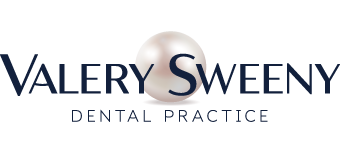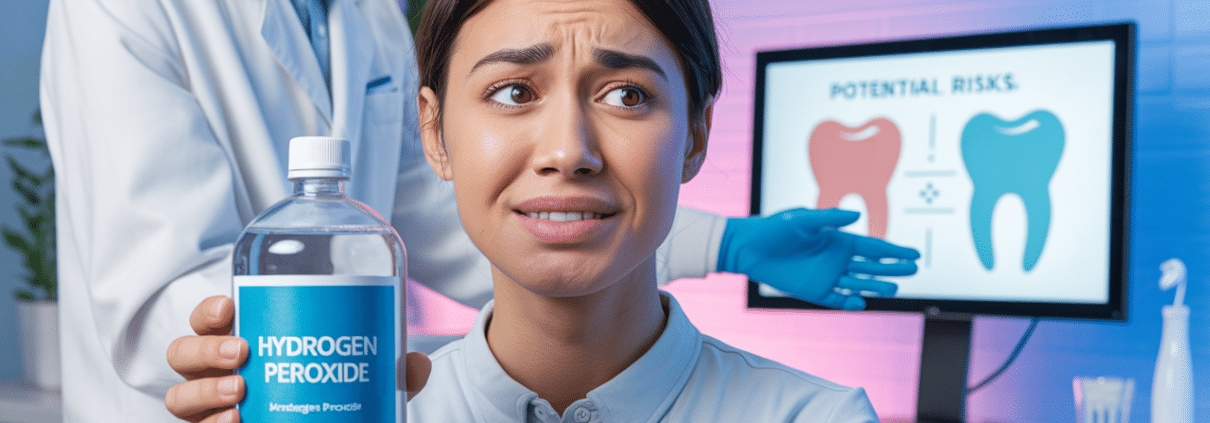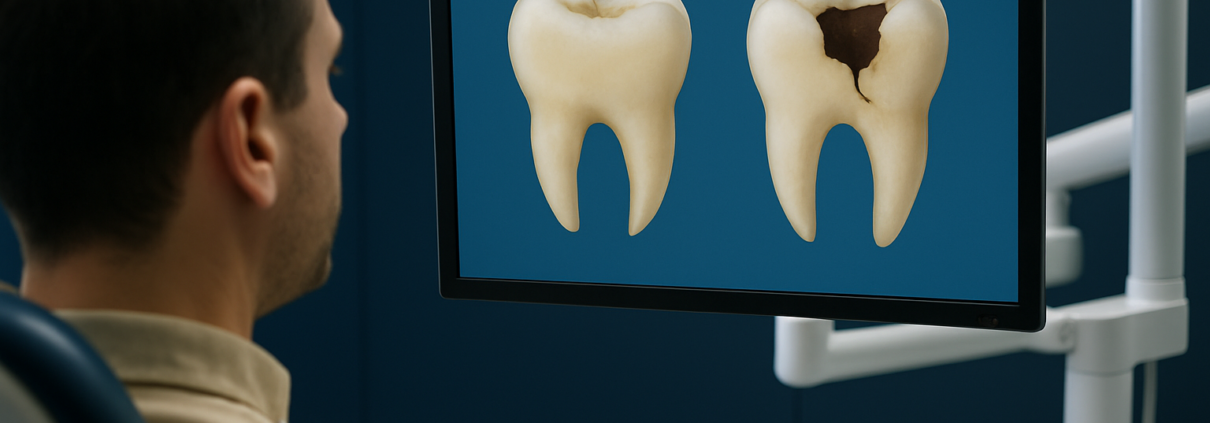You felt that tiny sting when sipping cold water, turned to Google, and ended up asking, “Can hydrogen peroxide kill cavities?” It’s a common question—and one that’s fueled by TikTok hacks, home remedy blogs, and a deep desire to avoid the dentist.
But here’s the deal: cavities don’t heal themselves, and hydrogen peroxide isn’t the dental cure-all it’s often hyped up to be. That doesn’t mean it’s useless—but it does mean you need to separate fact from fiction before swishing your way into dental disaster.
TLDR – Quick Guide
- Short Answer: No, hydrogen peroxide can’t “kill” or reverse cavities
- What It Can Do: Reduce bacteria, whiten teeth, and help with gum inflammation
- Cavity Reality: Once a tooth decays, only a dentist can restore it with a filling or other treatment
- Risks: Overuse of peroxide can damage enamel and irritate gums
- Smarter Moves: Fluoride toothpaste, dental visits, and sealants are your best bet
Detailed Breakdown: Hydrogen Peroxide vs. Cavities
1. What Actually Causes Cavities?
Cavities form when bacteria in your mouth produce acids that eat away at your tooth enamel. If untreated, they burrow deeper, damaging nerves and even leading to infection.
Once a cavity has formed, it’s a structural issue—not just a bacterial one. Hydrogen peroxide may kill surface bacteria, but it can’t rebuild tooth enamel.
2. What Hydrogen Peroxide Can Do
Hydrogen peroxide has legit benefits:
- Antibacterial: Helps reduce bacteria in the mouth temporarily
- Teeth Whitening: Active ingredient in many whitening products
- Gum Health: Can reduce inflammation when diluted and used safely
But even at its best, peroxide is preventive or cosmetic—not curative.
Source: According to the American Dental Association (ADA), hydrogen peroxide is safe in controlled doses, but there’s no evidence it can reverse decay.
3. Can Hydrogen Peroxide Reverse a Cavity?
In short: No.
- Stage 1 cavities (demineralization) may benefit slightly from fluoride treatments that can remineralize enamel—but peroxide doesn’t help here.
- Active cavities (visible holes or pain) need a filling, root canal, or other intervention.
Swishing peroxide doesn’t “clean out” decay—it just numbs symptoms temporarily.
4. The Real Risks of DIY Dental Care
Using undiluted or over-the-counter hydrogen peroxide improperly can lead to:
- Tooth sensitivity
- Enamel erosion
- Gum irritation or chemical burns
- Disruption of your oral microbiome
Don’t DIY your dental health based on internet trends. Misuse could leave you worse off—and paying more at the dentist.
5. Better Ways to Fight and Prevent Cavities
Skip the shortcuts and focus on what works:
- Brush twice a day with fluoride toothpaste
- Floss daily to remove plaque between teeth
- Limit sugar and acidic drinks
- Use fluoride mouthwash
- See your dentist every 6 months for cleanings and X-rays
If you’re worried about early enamel wear, your dentist might recommend fluoride varnish or prescription toothpaste.
Key Takeaways
- Hydrogen peroxide can’t “kill” or cure cavities—it’s not a substitute for dental treatment.
- It has some antibacterial and whitening benefits when used safely and correctly.
- Misusing peroxide can damage teeth and gums, potentially worsening your oral health.
- Cavities need professional care—fillings, sealants, or other restorative treatments.
- Prevention is your best defense: fluoride, brushing, flossing, and regular dental visits.
FAQs
Can I use hydrogen peroxide as a mouthwash?
Yes—if properly diluted (usually a 3% solution mixed 1:1 with water) and not used daily. But it should never replace brushing or flossing.
Will hydrogen peroxide make a cavity worse?
Overuse can weaken enamel and irritate gums, making your mouth more vulnerable—not less.
Can hydrogen peroxide stop a cavity from growing?
No. It may reduce surface bacteria, but it doesn’t stop the decay process or rebuild lost enamel.
What’s better than peroxide for oral health?
Fluoride toothpaste, flossing, a balanced diet, and regular dental checkups offer real cavity protection.
What should I do if I suspect a cavity?
Book a dental appointment ASAP. Early treatment is faster, cheaper, and less invasive.
Echo Park is one of LA’s most dynamic neighborhoods—vintage charm meets modern hustle. Between traffic, parking drama, and packed schedules, the last thing you need is a dental office that’s out of the way or, worse, cold and clinical.
Choosing the right Echo Park dentist is about more than just credentials. It’s about convenience, comfort, and a vibe that makes you actually want to keep up with your checkups. Whether you’re new to the area or just looking to upgrade your smile care, here’s what really matters when choosing a dentist nearby.
TLDR – Quick Guide
- Location Perks: Less travel time = fewer missed appointments
- Comfort Counts: From calming design to kind staff, environment impacts experience
- Modern Care: Look for practices using tech like digital x-rays and online scheduling
- Local Benefits: Echo Park dentists often know the community and treat neighbors like family
- Pro Tip: Reviews and in-person vibes matter—visit the office before committing
Detailed Breakdown: What Makes a Great Echo Park Dentist?
1. Location Isn’t Just Convenience—It’s Commitment
If your dentist is 45 minutes away, guess how often you’ll go? Hint: not often. A local Echo Park dentist means:
- Easier scheduling between errands, work, or school runs
- Less time off work or babysitter juggling
- Emergency access when dental surprises hit (like cracked fillings or sudden pain)
And let’s not ignore the most LA factor of all—parking. Choose a practice with dedicated spots or easy street access to avoid the pre-appointment stress spiral.
2. The Power of a Comfortable Environment
A great dental office isn’t just about tools and treatments—it’s about how you feel walking in. Look for:
- Modern, inviting design (bonus if there’s natural light and not a 90s wallpaper border)
- Friendly, non-rushed staff who explain rather than lecture
- Amenities like noise-canceling headphones, TVs, or even aromatherapy
Studies show that patient comfort directly impacts follow-through on care. Translation: a cozy chair and warm welcome aren’t fluff—they’re strategy.
3. Tech and Treatment Matter Too
In Echo Park, where innovation meets indie vibes, your dentist should keep up. Look for:
- Digital X-rays (faster, less radiation)
- Online booking and text reminders
- Clear aligner systems like Invisalign
- Preventive tech like digital cavity detection or intraoral cameras
Ask about tech during your consult—if they’re still using paper charts, it’s a red flag.
4. Local Practices Understand the Community
An Echo Park dentist isn’t just treating mouths—they’re serving neighbors. That usually means:
- Flexible payment options for uninsured or self-pay patients
- Bilingual staff in diverse neighborhoods
- Community involvement like school visits or health fairs
This local, community-driven approach leads to more compassionate, personalized care.
Key Takeaways
- Location matters more than you think—choosing a dentist near your home or work improves appointment follow-through.
- Comfort isn’t cosmetic; calming environments and kind staff reduce anxiety and build trust.
- Technology-forward practices in Echo Park make your care quicker, more accurate, and often more affordable.
- Supporting a local Echo Park dentist often means supporting someone who gives back to the community.
- Don’t just book based on insurance—book based on vibe, value, and verifiable reviews.
FAQs
How do I find the best Echo Park dentist?
Start with Google or Yelp, filter by “open now” or “accepting new patients,” and look for consistent, high-rated reviews. Visit the office if you can to get a feel for the space.
Is a local dentist really better than one across town?
Yes—convenience leads to better follow-through and quicker response time for urgent needs.
What should I look for during my first visit?
Pay attention to how you’re greeted, how clean and modern the space is, how the dentist explains things, and whether you feel comfortable asking questions.
What’s the cost difference between Echo Park dentists and other LA areas?
Prices are comparable across LA, but local dentists often offer more flexible payment plans or new patient specials to compete in a dense market.
Can I get cosmetic treatments from an Echo Park dentist?
Absolutely. Many Echo Park dentists offer veneers, whitening, and Invisalign—just ask during your consultation.
You brush every day. You floss. You even swish with mouthwash. But what if you’re still damaging your teeth—without even realizing it? That’s where understanding the difference between dental erosion vs. cavities becomes crucial.
Although they both involve enamel damage, dental erosion and cavities are caused by different processes, and knowing which you’re dealing with can determine how to treat (and prevent) further damage. Spoiler: not all tooth problems are due to sugar or bad brushing. Sometimes, it’s the acidic foods you love or that daily soda habit silently wearing your smile down.
TLDR – Quick Guide
- Dental Erosion: Loss of enamel caused by acids—not bacteria.
- Cavities: Tooth decay caused by bacterial acid breaking down enamel.
- Key Difference: Erosion is chemical; cavities are bacterial.
- Prevention: Avoid acidic foods, brush properly, and limit sugar intake.
- Treatment: Fluoride, dental bonding, or restorations depending on severity.
Detailed Breakdown
What Is Dental Erosion?
Dental erosion is the gradual wearing away of tooth enamel caused by direct exposure to acid—not from bacteria, but from your diet or medical conditions. Think of it as your enamel slowly dissolving over time.
Common causes include:
- Acidic drinks like soda, sports drinks, and citrus juices
- Acid reflux or GERD
- Frequent vomiting (as seen in eating disorders or pregnancy)
- Excessive use of chewable vitamin C or aspirin
- Sucking on lemons (yes, people do that)
Symptoms of dental erosion:
- Increased tooth sensitivity
- Transparent or thin-looking edges of front teeth
- Smooth, shiny enamel (that’s thinning)
- Yellowing (as dentin becomes exposed)
- Cupping or dents on the chewing surface
What Are Cavities?
Cavities, or dental caries, are the result of bacterial activity. Oral bacteria feed on sugars from food and produce acid as waste. This acid dissolves enamel, forming holes in the tooth structure.
Common causes include:
- Poor brushing and flossing habits
- Frequent snacking on sugary or starchy foods
- Dry mouth (which reduces protective saliva)
- Plaque buildup
- Not seeing a dentist regularly
Symptoms of cavities:
- Toothaches
- Visible holes or pits in the teeth
- Sensitivity to sweet, hot, or cold
- Brown or black spots
- Pain when biting down
Dental Erosion vs. Cavities: What’s the Real Difference?
| Feature | Dental Erosion | Cavities (Tooth Decay) |
| Cause | Acidic substances or conditions | Acid produced by bacteria from sugar |
| Damage Type | Surface-level enamel wear | Enamel destruction followed by dentin decay |
| Triggers | Soda, GERD, vomiting, acidic foods | Poor hygiene, sugar, plaque |
| Progression | Gradual, often widespread | Localized, can rapidly deepen |
| Treatment Approach | Fluoride, diet change, remineralization | Fillings, root canals, restorations |
Understanding the root cause helps determine the best course of action—and avoid compounding the problem.
How to Prevent Both
Whether it’s erosion or cavities, prevention is your best defense:
- Rinse After Acid Exposure
Don’t brush immediately after acidic food or drinks. Instead, rinse with water and wait 30 minutes. - Use Fluoride Toothpaste
Fluoride strengthens enamel and helps reverse early damage. - Eat Smart
Cut back on sugary snacks and acidic beverages. Drink water instead. - Use a Straw
If you can’t ditch soda or juice, drink through a straw to limit acid contact with teeth. - Don’t Skip the Dentist
Routine cleanings and exams catch both erosion and decay before they get worse. - Address Underlying Health Issues
Conditions like acid reflux or eating disorders should be managed with your physician and dentist.
Treatment Options
For Dental Erosion:
- Fluoride Treatments: Strengthen weakened enamel.
- Remineralizing Products: Such as calcium phosphate pastes.
- Bonding or Veneers: To protect and restore appearance in severe cases.
For Cavities:
- Dental Fillings: To remove decay and restore tooth structure.
- Crowns: If the decay is extensive.
- Root Canals: If the decay reaches the pulp.
- Sealants: Especially for kids, to protect molars from decay.
Key Takeaways
- Dental erosion and cavities are both serious—but different—forms of tooth damage.
- Erosion is caused by direct acid exposure; cavities result from bacterial acid.
- Prevention involves smart habits: good oral hygiene, a balanced diet, and routine dental visits.
- Early detection is critical—whether it’s erosion or decay, you can’t fix what you ignore.
- Dentists can offer tailored treatment once the type and extent of damage is identified.
FAQs
Can I have both erosion and cavities at the same time?
Yes. Eroded enamel makes your teeth more vulnerable to cavities, so they often go hand-in-hand.
Is enamel loss permanent?
Enamel doesn’t regenerate, but early-stage damage can sometimes be remineralized. Severe cases require restorations.
Are “sensitive teeth” always caused by cavities?
No. Sensitivity can also come from erosion, gum recession, or worn fillings—not just decay.
Does whitening toothpaste cause erosion?
Some abrasive whitening pastes can contribute to enamel wear. Ask your dentist about gentler alternatives.
How do I know if it’s erosion or decay?
A dentist will evaluate the location, pattern, and severity of damage using visual exams and X-rays.



